
Rural areas with the greatest opportunities for nurses
This story originally appeared on NursingEducation and was produced and distributed in partnership with Stacker Studio.
Rural areas with the greatest opportunities for nurses
Enrollment in four-year nursing programs increased by almost 6% in 2020, to 250,856, according to research from the American Association of Colleges of Nursing. In 2022, there will be more registered nursing (RN) jobs than any other profession in the United States, according to the American Nurses Association. These are positive signs, but today’s nursing shortages that were announced in 2012 are more urgent today than in any other time in American history and show no signs of abating.
Demand for RNs is expected to grow by 12% from 2018 to 2028, according to data from the U.S. Bureau of Labor Statistics (BLS). That percentage is almost double that of expected growth across all occupations, which the BLS predicts to be 7%. The nursing shortage is felt most acutely in rural parts of the United States, where access to health care is more limited across the board for patients, and average salaries may be lower for health care professionals.
NursingEducation analyzed data from the U.S. Bureau of Labor Statistics to rank nonmetropolitan areas by job opportunities for registered nurses. Regions are ordered by the location quotient and number of jobs available compared to the national average. A score above 1 indicates the region has a higher concentration of registered nurses than the national average. Employment per 1,000 jobs was used as a tiebreaker. This analysis does not focus on nurse practitioners, nurse midwives, and other specialized nursing occupations, although there is significant demand today for specialists.
The Department of Health and Human Services (HHS) announced in August it would distribute $8.5 billion in American Rescue Plan funding this summer to help compensate health care providers serving Medicare, Medicaid, and Children’s Health Insurance Plan patients in rural communities for lost revenue and increased coronavirus-related expenses. In addition, the HHS is allocating $52 million from the American Rescue Plan to train rural health care providers, including nurses.
Keep reading to discover which rural areas have the greatest opportunities for RNs.

#20. Southern Vermont
- Location quotient: 1.1
- Registered nurse employment per 1,000 jobs: 23.9
- Total registered nurses in region: 2,330
- Average annual salary: $72,930
Vermont Public Radio reported Aug. 13 that 13 of the 14 counties in Vermont had high or substantial COVID-19 transmission based on numbers from the Centers for Disease Control and Prevention (CDC). Vermont is ranked #15 among states with the highest projected nursing shortages by 2030. The Nurse Licensure Compact, which includes 36 states and Guam, allows RNs and licensed practical/vocational nurses (LPN/VNs) to have a multi-state license that affords them the ability to practice across state lines as needed. Legislation for Vermont to enter this compact was approved in June and will go into effect in February 2022.
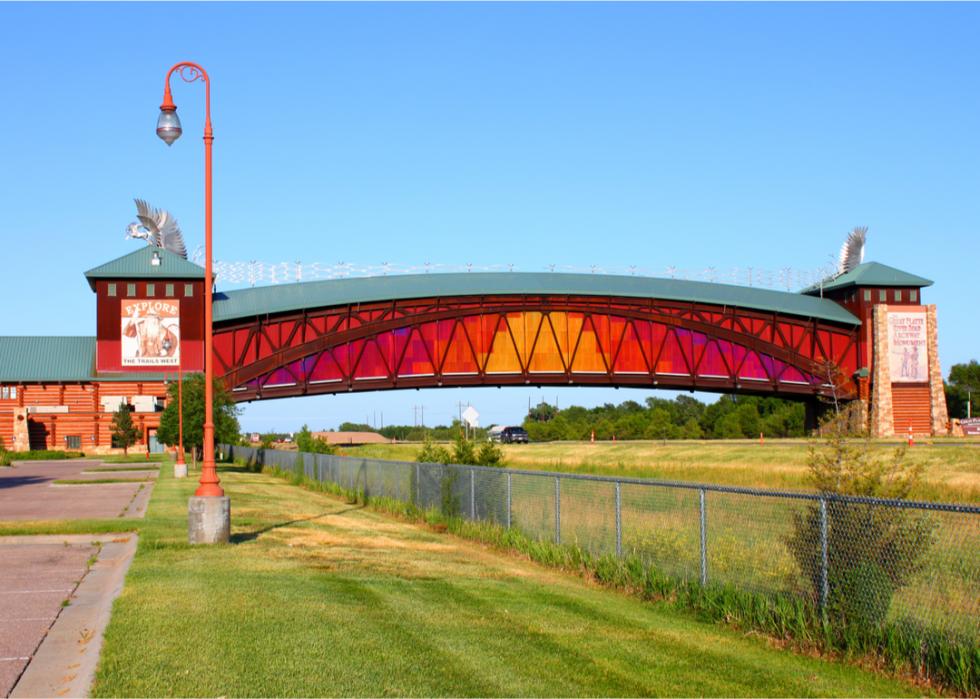
#19. South Nebraska
- Location quotient: 1.1
- Registered nurse employment per 1,000 jobs: 24.1
- Total registered nurses in region: 3,490
- Average annual salary: $68,080
CHI Health in Omaha, Nebraska, began offering financial incentives in early August for nurses willing to pick up additional shifts. Nurses were offered an additional $30 an hour for extra weekday shifts, or an extra $35 an hour on weekends. Roughly 10% of Nebraska’s nurses have left the profession, according to data from the Nebraska Hospital Association, signaling a huge amount of opportunity for nurses looking to settle in the state.

#18. Eastern Ohio
- Location quotient: 1.1
- Registered nurse employment per 1,000 jobs: 24.2
- Total registered nurses in region: 3,070
- Average annual salary: $63,900
Roughly one-third of elder care homes in Ohio reported in June they were short-staffed. The shortage has led some facilities to turn away new residents or reduce offered services. Direction Home of Eastern Ohio, a long-term elder care facility, took to hosting a job fair in August to attract RNs and licensed social workers, even including a $2,000 sign-on bonus in addition to retention bonuses.

#17. Southeast Missouri
- Location quotient: 1.1
- Registered nurse employment per 1,000 jobs: 24.3
- Total registered nurses in region: 3,880
- Average annual salary: $59,640
Nursing shortages exist in 97 of Missouri’s 114 counties, according to a 2021 study by the University of Missouri and the Missouri State Board of Nursing called “Show Me the Nursing Shortage: Location Matters in Missouri Nursing Shortage.” Most of those counties are rural.
In the first week of August, Missouri distributed 30 FEMA ambulances around the state, according to the HHS. In southeast Missouri, COVID-19 hospitalizations have increased 35% week-over-week leading up to Aug. 11, creating massive shortages in nursing staff.
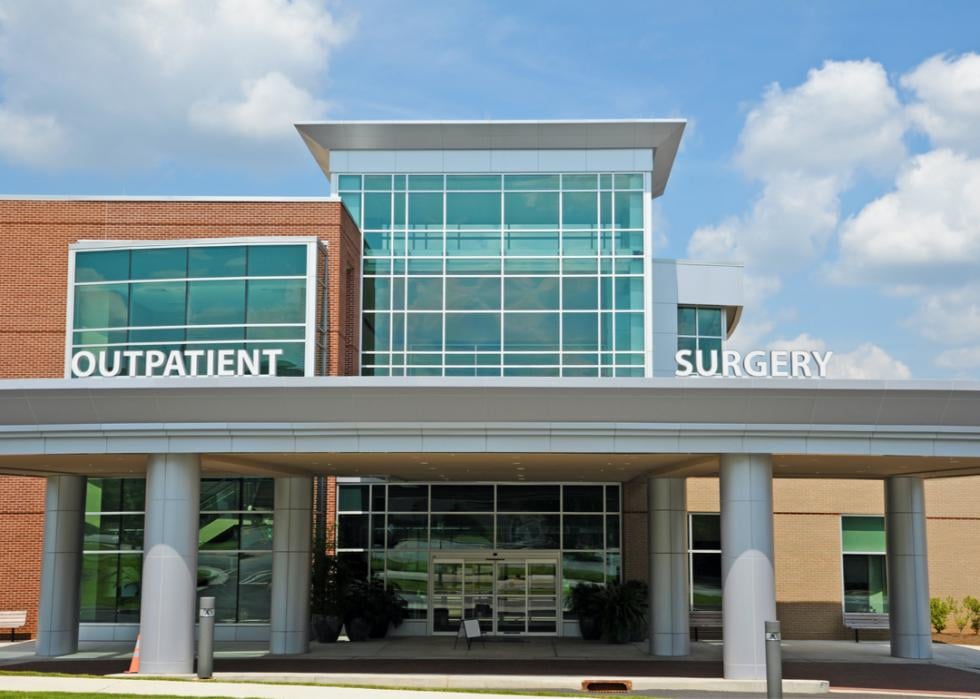
#16. Southwest Maine
- Location quotient: 1.1
- Registered nurse employment per 1,000 jobs: 24.5
- Total registered nurses in region: 4,470
- Average annual salary: $69,100
To ensure the safety of staff and patients, all health care workers throughout Maine are required to get COVID-19 vaccines. Maine and Vermont have the two fastest-aging populations in the country—a state expected to contribute to increased nursing needs.

#15. Upper Peninsula of Michigan
- Location quotient: 1.1
- Registered nurse employment per 1,000 jobs: 24.5
- Total registered nurses in region: 2,480
- Average annual salary: $63,540
Throughout Michigan, a rising number of hospital workers are unionizing to create more support for medical professionals, including nurses. Demand for nurses is rising through Michigan’s Upper Peninsula, in particular, as COVID-19 case counts rise throughout the peninsula where there is a high concentration of at-risk residents.

#14. Northeast Maine
- Location quotient: 1.2
- Registered nurse employment per 1,000 jobs: 24.7
- Total registered nurses in region: 1,640
- Average annual salary: $67,230
As early as 2017, alarms were sounded on Maine’s nursing staff shortage, which at the time was expected to reach critical proportions by 2025. That was before the coronavirus hit, adding pressure to an already strained industry. In addition to having one of the fastest-aging populations in the country, Maine’s nurses are also getting older: In 2015, around one-third of nurses were 55 or older. Northern Light EMMC, part of Bangor's RN Sponsorship Program, seeks to meet demand for nurses by offering financial help for the last two years of nursing school for students who agree to work at the hospital following graduation.

#13. Central New Hampshire
- Location quotient: 1.2
- Registered nurse employment per 1,000 jobs: 24.8
- Total registered nurses in region: 2,240
- Average annual salary: $77,130
The office of the New Hampshire attorney general in April approved the purchase by Concord Hospital of assets of LRGHealthcare for $30 million. That acquisition also includes Laconia and Franklin hospitals. LRGHealthcare had declared bankruptcy in 2020. The purchase will help the hospital recruit sorely needed medical professionals. About a dozen nurses were hired in the past several months following their graduation from Laconia and Franklin hospitals; 30 more were hired in Concord. New Hampshire is ranked #10 among states with the highest projected nursing shortages by 2030.

#12. Connecticut
- Location quotient: 1.2
- Registered nurse employment per 1,000 jobs: 25.2
- Total registered nurses in region: 760
- Average annual salary: $67,980
The Connecticut Department of Labor characterizes the state as having an ongoing shortage of nurses. This is in spite of work in the Connecticut schools to raise enrollment statistics for nursing programs. The need goes beyond hospitals. Families and advocates of individuals in nursing homes spent months pressuring lawmakers to increase mandatory minimum staffing hours for nurses or certified nursing assistants to spend with individual residents. Those pushing for more hours sought to bring the total up from 1.9 to 4.1 hours. The compromise struck was three hours of minimum required hours, to take effect in January 2022.

#11. North Central Tennessee
- Location quotient: 1.2
- Registered nurse employment per 1,000 jobs: 25.4
- Total registered nurses in region: 2,680
- Average annual salary: $62,810
Vanderbilt University Medical Center in Nashville, Tennessee, as of June 2021, was trying to fill 100 nursing positions across five hospitals and clinics. Ascension Saint Thomas Hospital Midtown, also in Nashville, seeks to mitigate burnout among nurses and other medical staff through different methods. Some of these methods include providing resources that include more oversight and care for new nurses in residency programs, and teach-ins to help nurses manage stress and strike a work-life balance.

#10. West Central Illinois
- Location quotient: 1.2
- Registered nurse employment per 1,000 jobs: 25.4
- Total registered nurses in region: 4,160
- Average annual salary: $62,600
Chamberlain University in August announced the rollout of a major initiative among three health care systems to address the significant shortages in operating room nurses. In Normal, Illinois, the new Illinois State University president, Terri Goss-Kinzy, Ph.D., is prioritizing ways to address the nursing shortage throughout the state. “There’s a nursing shortage, a K-12 teacher shortage, and those happen to be areas where we’re particularly strong. It’s a question of how can we build that capacity while maintaining the high quality, student-focused experience we provide at Illinois State,” Kinzy told Austin Schick of Central Illinois Proud. Throughout the state, fewer than a quarter of all nursing homes have reached a 75% COVID-19 vaccination rate among staff.
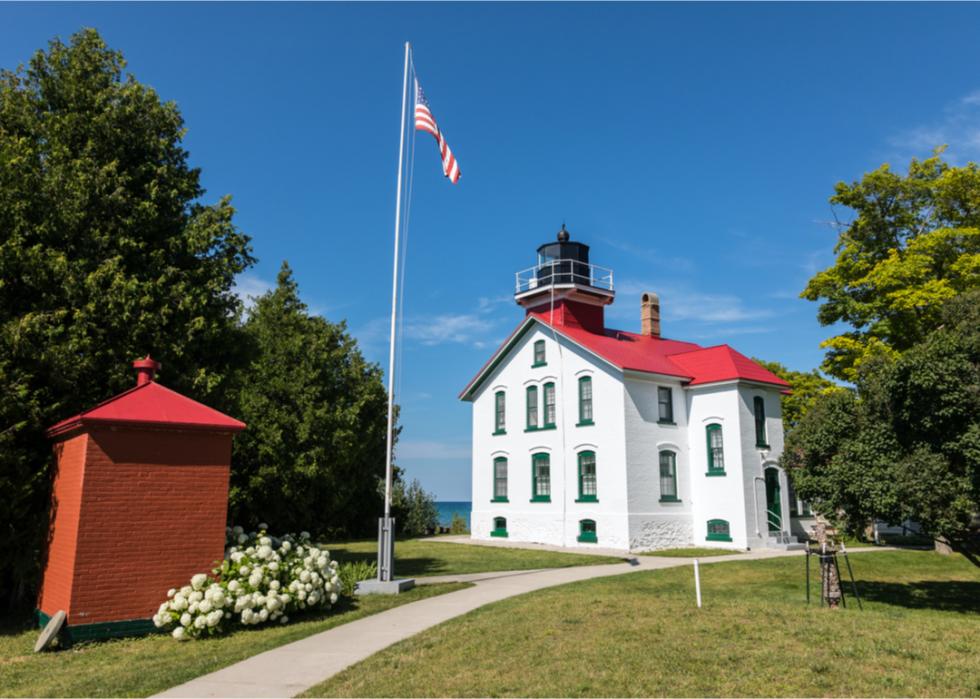
#9. Northwest Lower Peninsula of Michigan
- Location quotient: 1.2
- Registered nurse employment per 1,000 jobs: 26.1
- Total registered nurses in region: 2,850
- Average annual salary: $64,420
The Michigan Nurses Association is lobbying for legislation to be passed limiting how many hours an RN must work and how many patient assignments they are given. Per capita, 29 states have equal or fewer nurses than Michigan, according to the Bureau of Health Workforce Database and NurseJournal.

#8. Southeast Mississippi
- Location quotient: 1.2
- Registered nurse employment per 1,000 jobs: 26.1
- Total registered nurses in region: 3,820
- Average annual salary: $53,690
Baptist Memorial Hospital–Golden Triangle began offering $5,000 bonuses to newly hired nurses with at least two years of experience as a way to bring on more workers. These bonuses have become fairly commonplace throughout Mississippi and other states with significant nursing shortages.
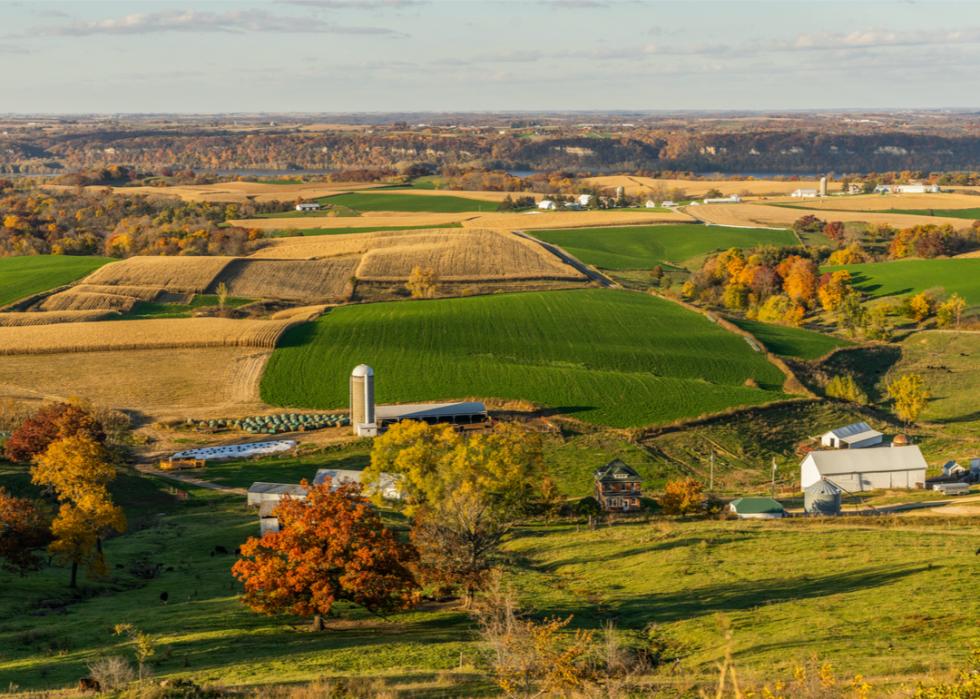
#7. Southwest Iowa
- Location quotient: 1.2
- Registered nurse employment per 1,000 jobs: 26.3
- Total registered nurses in region: 2,090
- Average annual salary: $58,000
With critical shortages in nursing staff, hospitals like Mercy Cedar Rapids in Iowa have turned to traveling nurses to supplement staff deficiencies. Demand is driving those costs way up—Mercy Cedar Rips pays as much as $120 an hour for a traveling nurse. More than 100 such traveling nurses were sent to the hospital in 2020; those fees were reimbursed by the CARES Act.

#6. Capital/Northern New York
- Location quotient: 1.2
- Registered nurse employment per 1,000 jobs: 26.4
- Total registered nurses in region: 3,530
- Average annual salary: $72,200
New York is third behind California and Texas in terms of demand for nurses. At Binghamton University, the newly opened Decker College of Nursing and Health Sciences offers a program underwritten by a $2.8 million grant that trains students who live in rural New York or Pennsylvania and who have agreed to work in those regions.

#5. Southern Illinois
- Location quotient: 1.3
- Registered nurse employment per 1,000 jobs: 27.4
- Total registered nurses in region: 2,310
- Average annual salary: $60,840
In the four weeks leading up to June 20, 2021, the American Association of Retired Persons (AARP) found that more than one-fifth of all Illinois nursing homes reported having a shortage of nurses or aides. Throughout the southern half of the state, health care staff at long-term care facilities reported vaccination rates ranging from 25% at the low end to 75% at the high end at different facilities. There were no health care locations in the region with a higher vaccination rate than 75% among staff.

#4. Northwest Nebraska
- Location quotient: 1.4
- Registered nurse employment per 1,000 jobs: 29.1
- Total registered nurses in region: 1,090
- Average annual salary: $65,830
Six counties in Nebraska report having no RNs and six report having just one. The average age of nurses throughout the state is 44. Demand for nurses throughout the state is high and increasing; that, combined with a low cost of living, makes the average annual salary for Nebraska RNs go quite a long way.

#3. Southern Ohio
- Location quotient: 1.4
- Registered nurse employment per 1,000 jobs: 29.3
- Total registered nurses in region: 4,390
- Average annual salary: $64,540
Gov. Mike DeWine signed Senate Bill 3 in July, which allows Ohio to enter the Nurse Licensure Compact and streamlines licensing requirements for nurses to practice across state lines. Benefits of entering the compact are twofold: increased economic opportunities for RNs and increased access to care for patients. In 2020, Ohio had 150 primary care health professional shortage areas, based on data from the Health Resources and Services Administration.
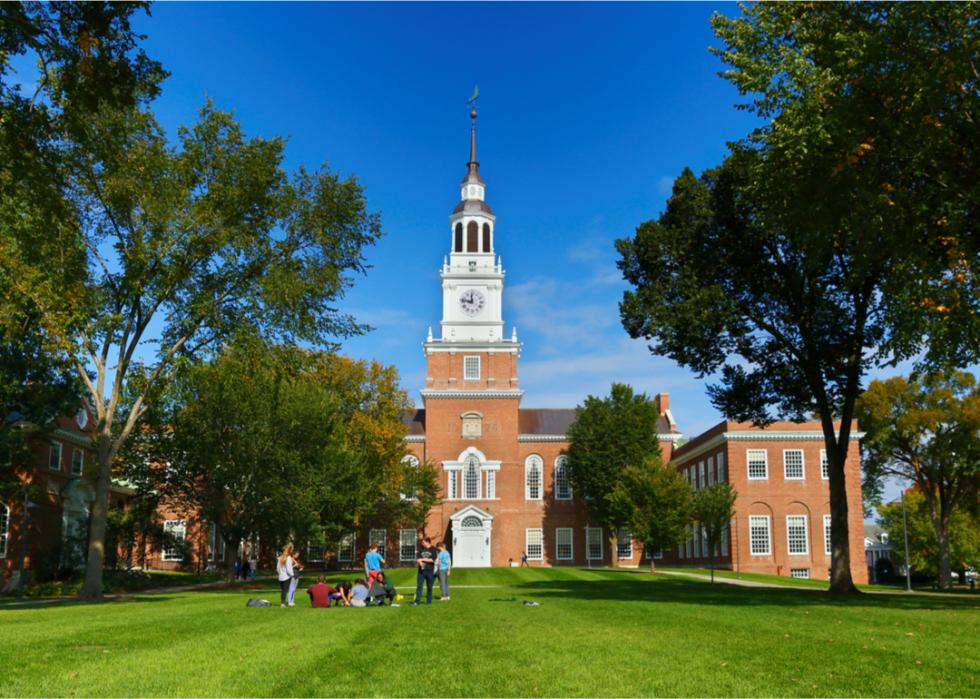
#2. West Central-Southwest New Hampshire
- Location quotient: 1.4
- Registered nurse employment per 1,000 jobs: 30.5
- Total registered nurses in region: 3,010
- Average annual salary: $75,310
Long-term care facilities throughout New Hampshire are experiencing critical nursing and other staff shortages. Sites such as New Hampshire Needs Caregivers! seek to proactively recruit help for these vital sectors of care. The need for nursing assistants has grown so dire, in fact, that New Hampshire Gov. Chris Sununu signed a bill allowing EMTs, paramedics, and people with military experience to sidestep otherwise required training courses and apply for a professional license. Average annual salaries for nurses are more than double average salaries in New Hampshire—coupled with the high demand for RNs, the state poses a very attractive option for nurses.

#1. East Kentucky
- Location quotient: 1.5
- Registered nurse employment per 1,000 jobs: 32.2
- Total registered nurses in region: 3,080
- Average annual salary: $59,080
Eastern Kentucky health facilities will need to fill nearly 2,000 nursing jobs by 2024, according to research from the Kentucky Center for Statistics. Nurses are in particularly high demand in rural communities across Kentucky—so much so that the University of Kentucky is now offering students a scholarship to double major. Hazard Community and Technical College announced a scholarship in August to train health care workers committed to serving rural communities.
This story originally appeared on NursingEducation and was produced and distributed in partnership with Stacker Studio.



